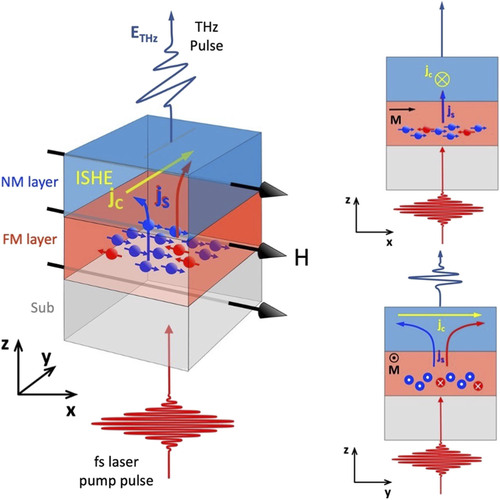We have had a research update published in APL Materials: “Spintronic terahertz emitters: Status and prospects from a materials perspective”, Charlotte Bull, Simmone M. Hewett, Ruidong Ji, Cheng-Han Lin, Thomas Thomson, Darren M. Graham, and Paul W. Nutter, APL Materials 9, 090701 (2021). You can download the file (open access) here.
Abstract: Spintronic terahertz (THz) emitters, consisting of ferromagnetic (FM)/non-magnetic (NM) thin films, have demonstrated remarkable potential for use in THz time-domain spectroscopy and its exploitation in scientific and industrial applications. Since the discovery that novel FM/NM heterostructures can be utilized as sources of THz radiation, researchers have endeavored to find the optimum combination of materials to produce idealized spintronic emitters capable of generating pulses of THz radiation over a large spectral bandwidth. In the last decade, researchers have investigated the influence of a wide range of material properties, including the choice of materials and thicknesses of the layers, the quality of the FM/NM interface, and the stack geometry upon the emission of THz radiation. It has been found that particular combinations of these properties have greatly improved the amplitude and bandwidth of the emitted THz pulse. Significantly, studying the material properties of spintronic THz emitters has increased the understanding of the spin-to-charge current conversion processes involved in the generation of THz radiation. Ultimately, this has facilitated the development of spintronic heterostructures that can emit THz radiation without the application of an external magnetic field. In this review, we present a comprehensive overview of the experimental and theoretical findings that have led to the development of spintronic THz emitters, which hold promise for use in a wide range of THz applications. We summarize the current understanding of the mechanisms that contribute to the emission of THz radiation from the spintronic heterostructures and explore how the material properties contribute to the emission process.
